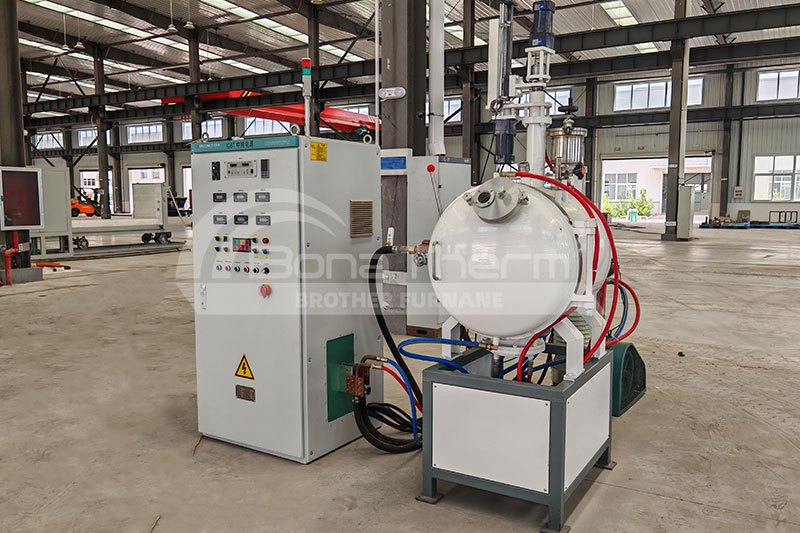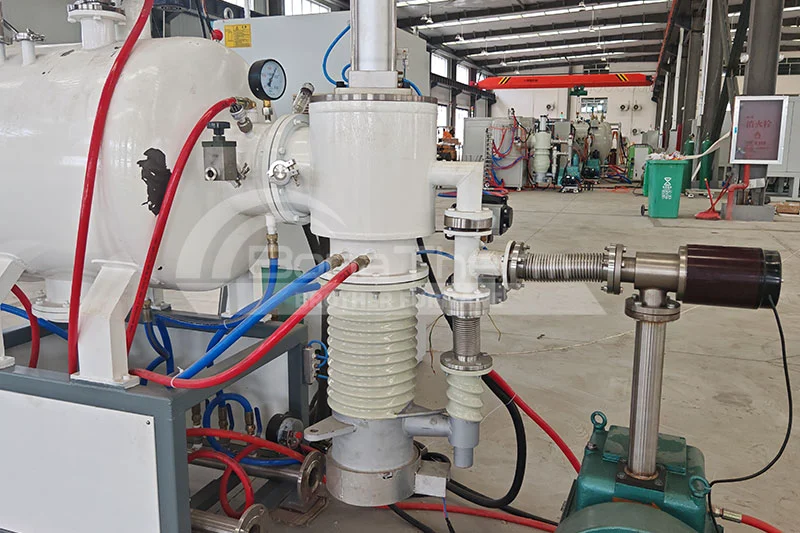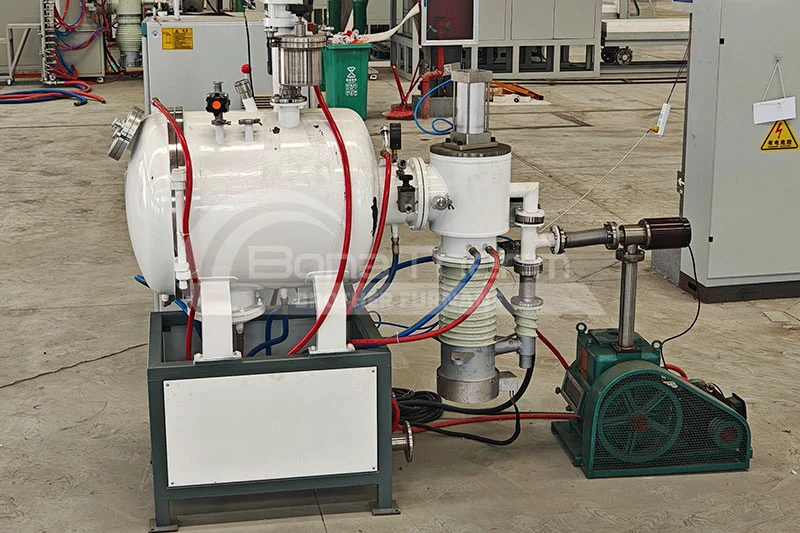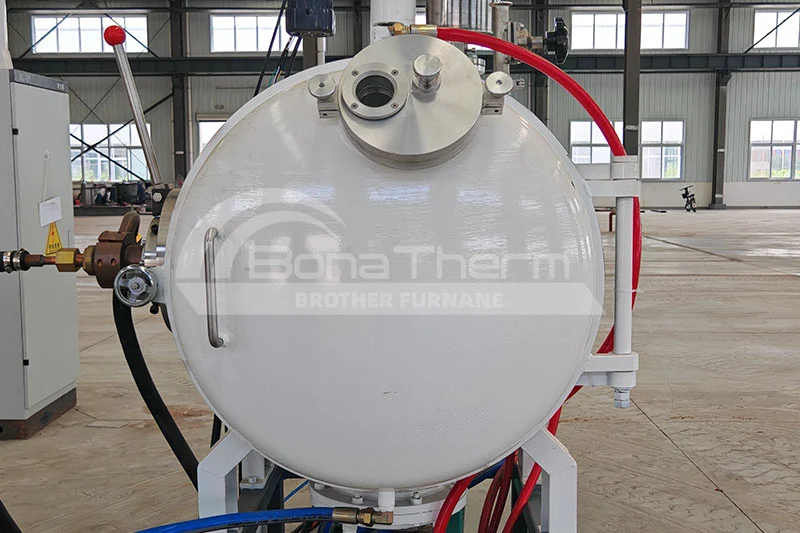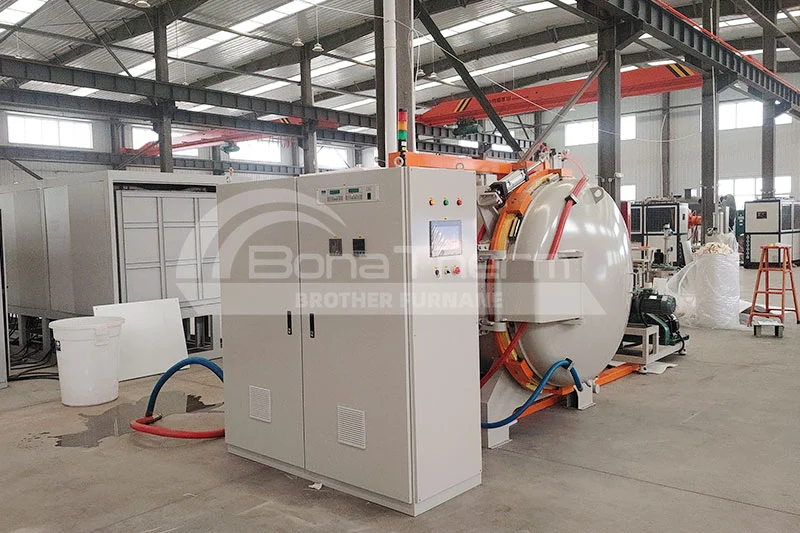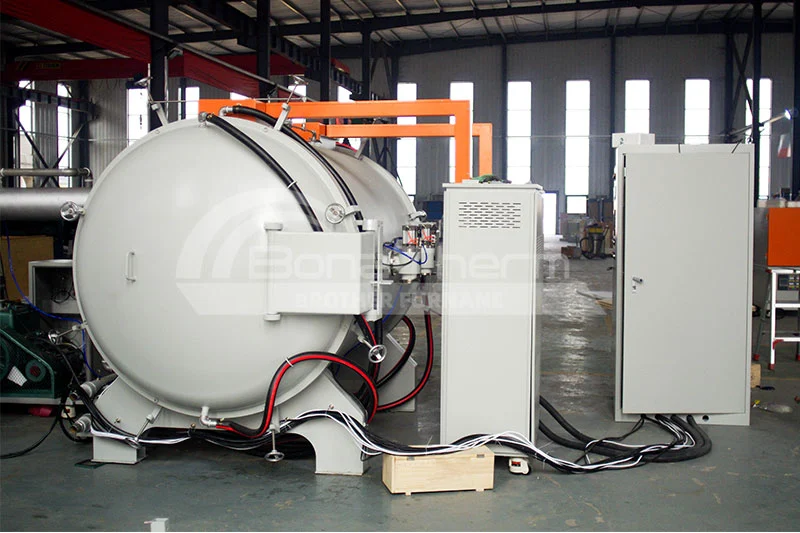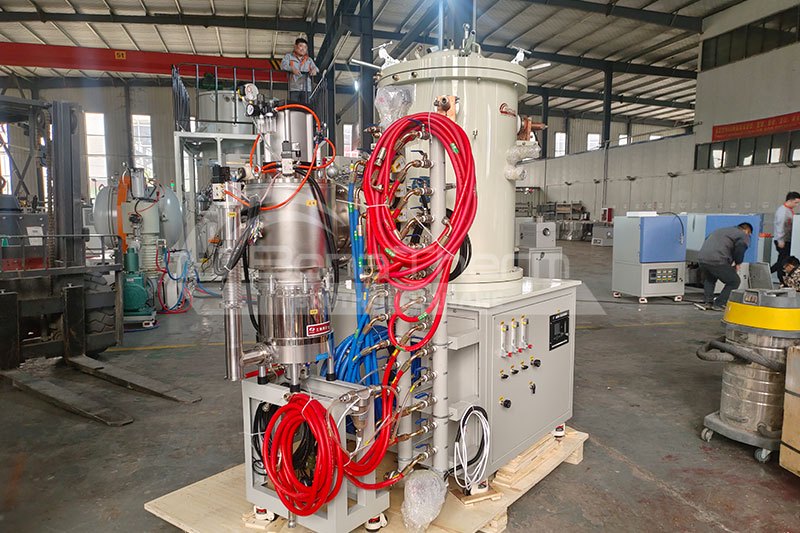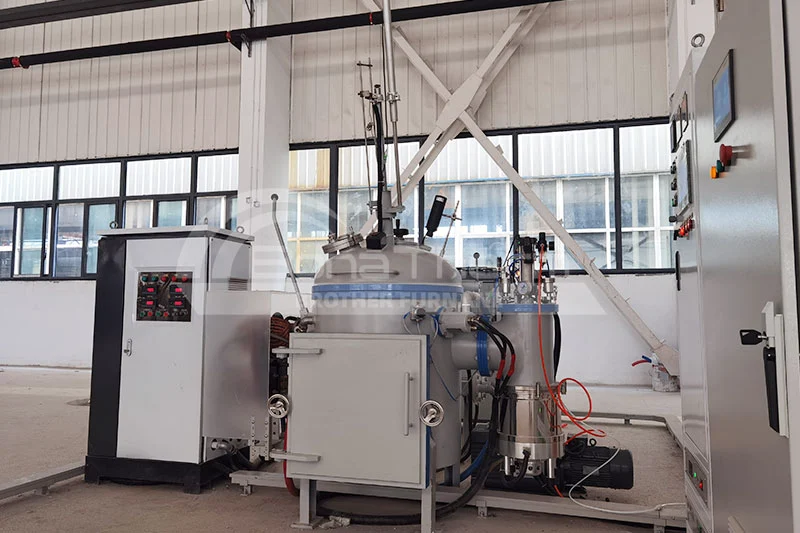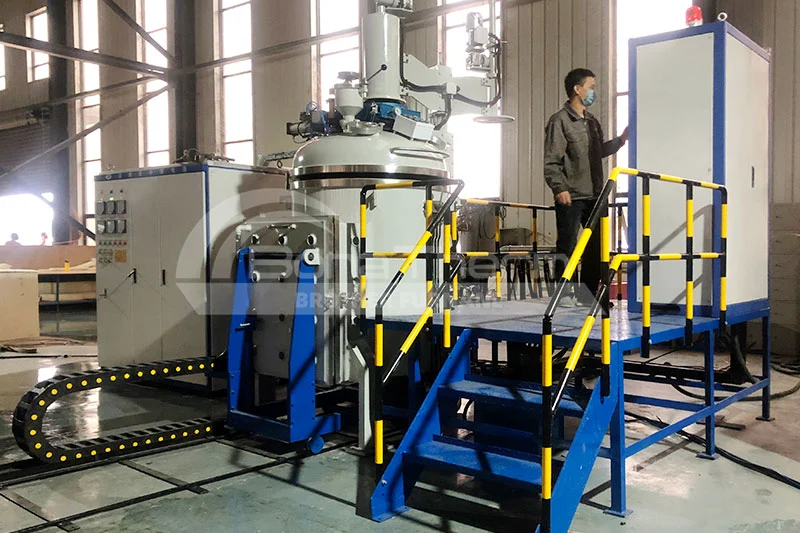Introduction
The 5kg Vacuum Induction Melting Furnace is a compact yet powerful system tailored for university laboratories and research institutes. With a desktop design, it is ideal for alloy development, sample casting, high-temperature sintering of non-metallics, and melting under protective atmospheres or vacuum.
Principle of Vacuum Induction Melting
In a vacuum environment, the induction coil generates an induced current through the principle of electromagnetic induction to achieve heating. An alternating current with a certain frequency passes through the electromagnetic coil surrounding the metal material, creating a varying magnetic field. This induces an electric current inside the metal, generating a large amount of heat to heat the material. At relatively lower temperatures, it can be used for vacuum induction heat treatment and related processes. At higher temperatures, the generated heat is sufficient to melt the metal, enabling the preparation of metals or alloy materials.
Key Features
- Fast Melting Rate: Capable of reaching 2100℃ (with optional thermal insulation jacket).
- Precise Temperature Control: Optional programmable controller allows users to define custom heating and cooling curves.
- Casting Functionality: Includes a pouring system to cast molten metal into molds for sample shaping.
- Multi-Atmosphere Operation: Supports smelting in air, protective gases, or under high vacuum (optional upgrade).
- Elemental Addition: An Optional secondary feeding system allows additive materials to be introduced during melting.
Furnace Structure and Components
- Induction Coil: Water-cooled copper coil powered by a medium-frequency power supply, generating a magnetic field to heat the metal through electromagnetic induction.
- Crucible: Located inside the coil, used to hold and melt metal. Common materials include magnesia, alumina, zirconia, and graphite for high-temperature resistance.
- Vacuum Chamber: Encloses the coil and crucible in a sealed environment to prevent oxidation and contamination during melting.
- Vacuum System: Consists of vacuum pumps, valves, and gauges to evacuate air and maintain a high vacuum level, typically up to 7×10⁻³ Pa.
- Furnace Body with Water Cooling: The furnace shell and lid are equipped with water-cooling jackets to control external surface temperature and ensure operational safety.
- Tilting Mechanism: Allows the furnace body to tilt for smooth and controlled pouring of molten metal into molds.
- Medium-Frequency Power Supply: IGBT or KGPS units providing 10–30 kHz medium-frequency current with high efficiency and power control.
- Electrical Control System: Controls key process parameters such as power, temperature, time, and vacuum level; supports automated or semi-automated operation.
Optional Accessories
- Si₃N₄ Loading Box
- Si₃N₄ Protection Board
Technical Parameters
Model | Loading Capacity(kg) | Rated Frequency(Hz) | Rated Power(kW) | Ultimate Vacuum(Pa) | Cooling Water(T/h) |
|---|---|---|---|---|---|
BR-RLL-10 | 10 | 3000 | 60 | 6x10-3 | 10 |
BR-RLL-25 | 25 | 2500 | 120 | 6x10-3 | 15 |
BR-RLL-50 | 50 | 2000 | 160 | 6x10-3 | 25 |
BR-RLL-100 | 100 | 2000 | 200 | 6x10-3 | 30 |
BR-RLL-200 | 200 | 1000 | 200 | 6x10-3 | 35 |
BR-RLL-300 | 300 | 800 | 250 | 6x10-3 | 40 |
BR-RLL-500 | 500 | 800 | 350 | 6x10-3 | 50 |
BR-RLL-1000 | 1000 | 800 | 400 | 6x10-3 | 70 |

